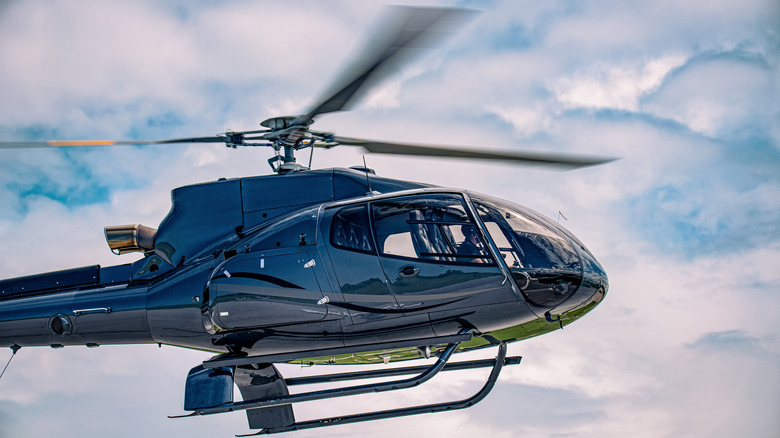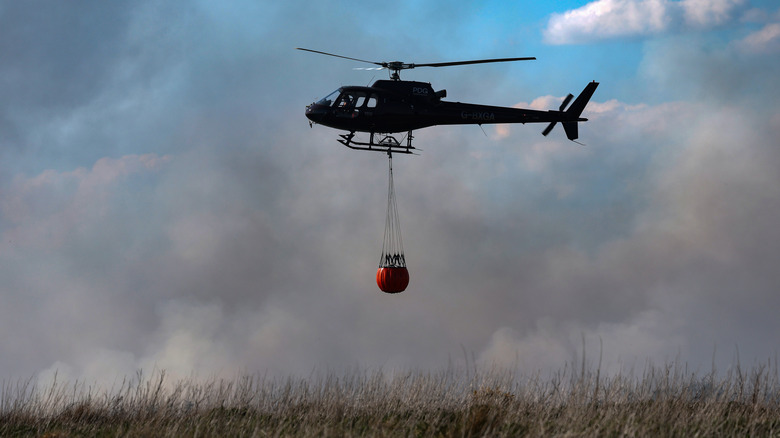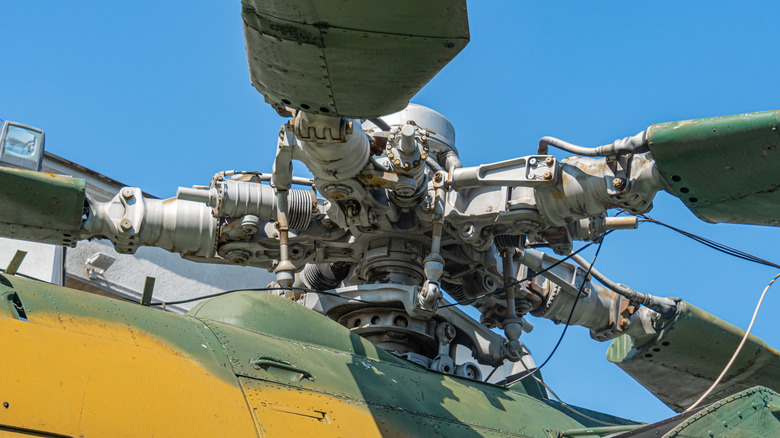Are Helicopters Powered By Jet Engines?
There's no argument that helicopters are not the same as jets. From their vertical lift to their hovering abilities, helicopters serve a purpose uniquely their own. But that doesn't mean they aren't powered by jet engines. While they don't use jet propulsion like airplanes do, most modern helicopters are powered by jet-based technology — specifically a type of jet engine called a turboshaft. Technically, any gas-powered turbine that makes thrust by expelling hot gases at high speeds qualifies as a jet engine. However, turbojet and turbofan engines generate forward motion.
Helicopters don't fly by pushing themselves forward. Instead, they rely on rotating blades to generate lift. That's where turboshaft engines come in. It sucks in air, compresses it, mixes it with fuel, ignites the mixture, and uses the resulting high-energy exhaust to spin turbines – just like a turbojet. Instead of directing that exhaust out the back to create thrust, a turboshaft uses the rotational energy of the turbine to turn a driveshaft.
A helicopter's driveshaft connects to the helicopter's transmission system, which then distributes the power to the main rotor and tail rotor. The job of the copter's engines isn't to "jet" the helicopter through the air, but rather provide the rotational power necessary to spin the rotor blades that lift and move the aircraft.
Why helicopters use turboshaft engines instead of piston engines
Before the invention of turboshaft engines, early helicopters used piston engines (just like the ones found in cars today). While these engines were — and still are – fine enough for small aircraft, it was obvious how limited they were once helicopters started getting bigger — especially with the largest military helicopter in the world — and more complex. As helicopter designs evolved and grew more demanding, engineers needed something more powerful and reliable to accommodate the medical field, firefighting, and the military.
Turboshaft jet engines were just the thing. Because they're lighter and more compact while still plenty powerful, they were exactly what the industry needed for smoother operation, less vibration, and greater reliability over piston engines. Their simplicity also made for better performance in extreme environments, such as high altitudes or hot climates, where piston engines just couldn't keep up. Today, most medium to large helicopters rely exclusively on turboshaft engines.
How turboshaft engines help helicopters fly
As stated, turboshaft engines function differently from other jet engines. While turbojet and turbofan engines push air backwards, the turboshaft engine pulls air downward, keeping the rotors spinning. This unique design is what allows helicopters to hover in place, take off vertically without a runway, and maneuver precisely, even in confined spaces.
In a typical helicopter setup, one or two turboshaft engines are mounted in or near the main rotor. These engines connect to a transmission system that drives the spinning blades on the top of the tail. The main rotor gives lift and directional movement, while the tail rotor works to counter the torque from the main rotor in line with Newton's third law. Without that tail rotor countering the torque, a single-rotor helicopter would spin in circles uncontrollably.
Turboshaft engines also have a vital safety feature known as autorotation. This means that if an engine fails, the main rotor will continue spinning from aerodynamic forces, allowing the pilot to maneuver for a controlled landing. This is an absolute must, especially if lives are on the line in combat, medical transport, or natural disaster response.


